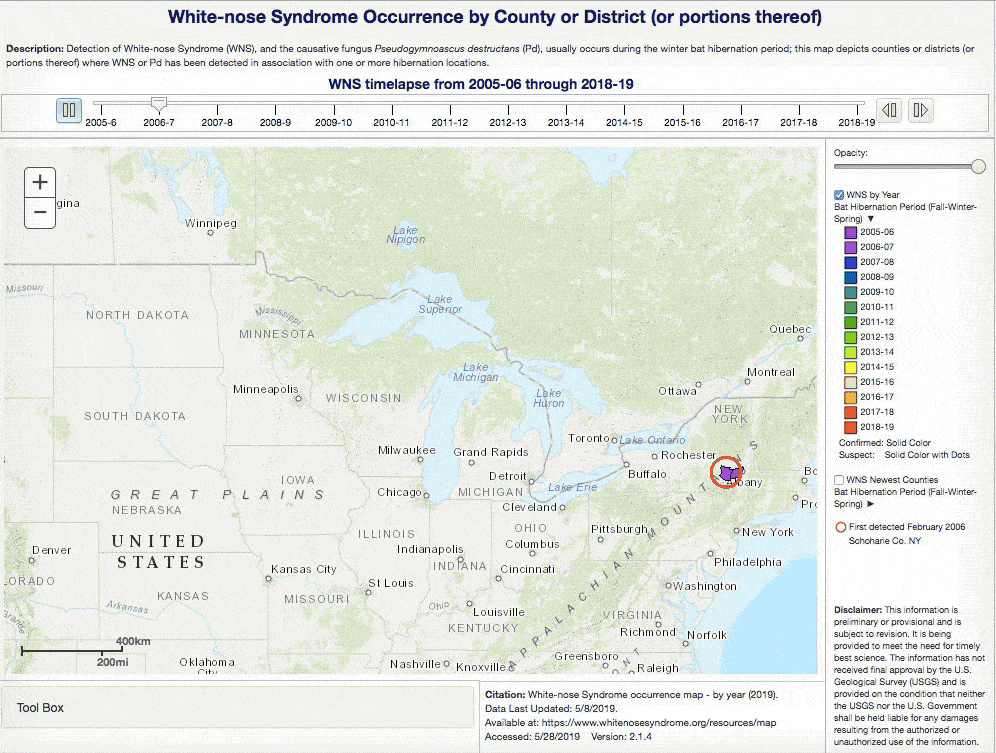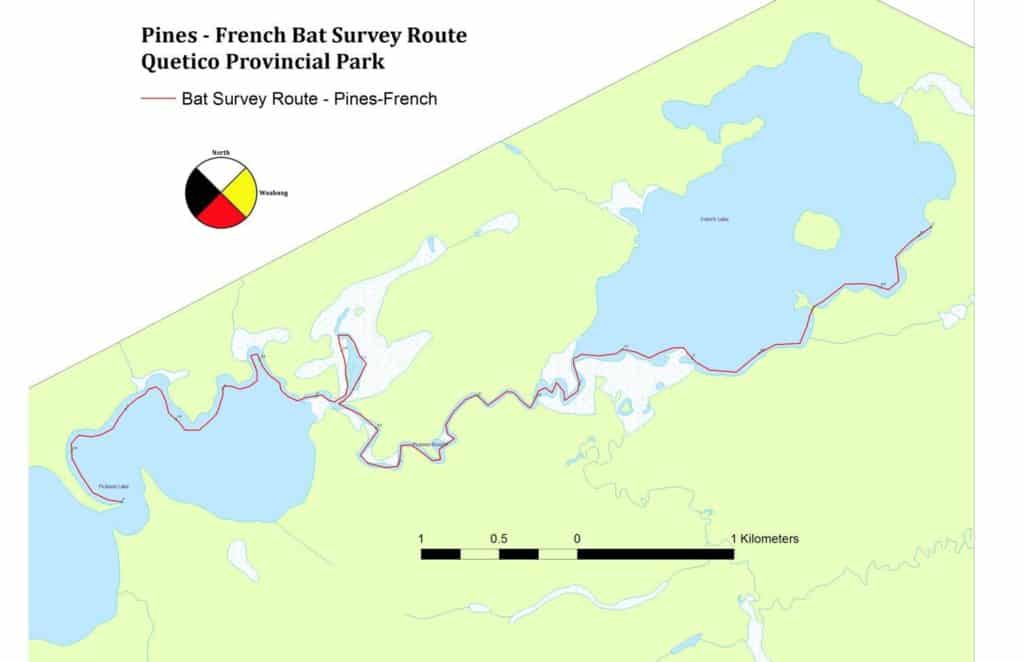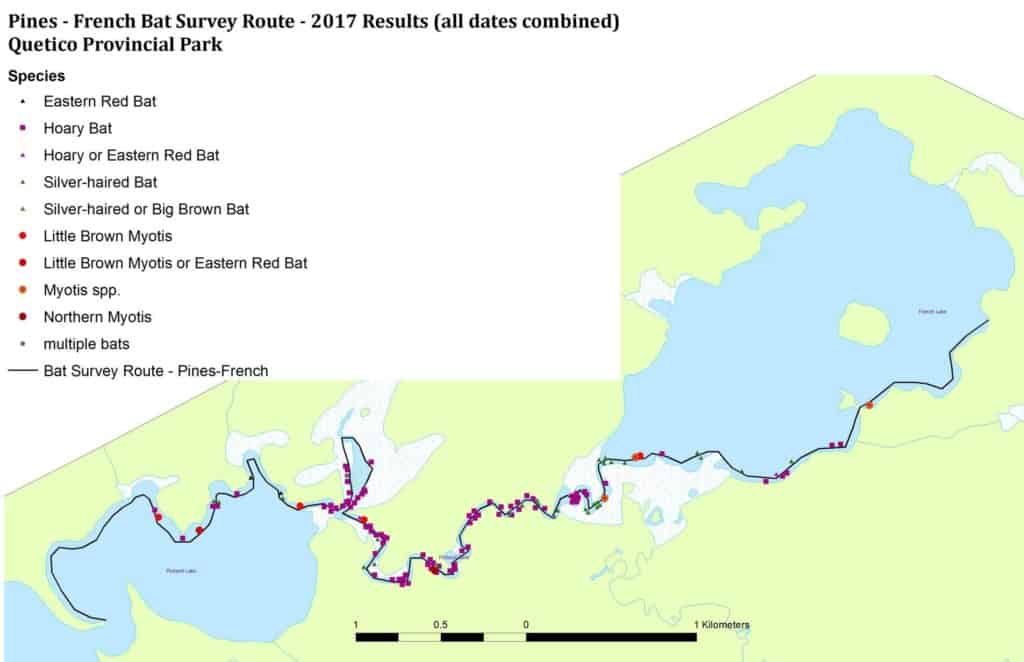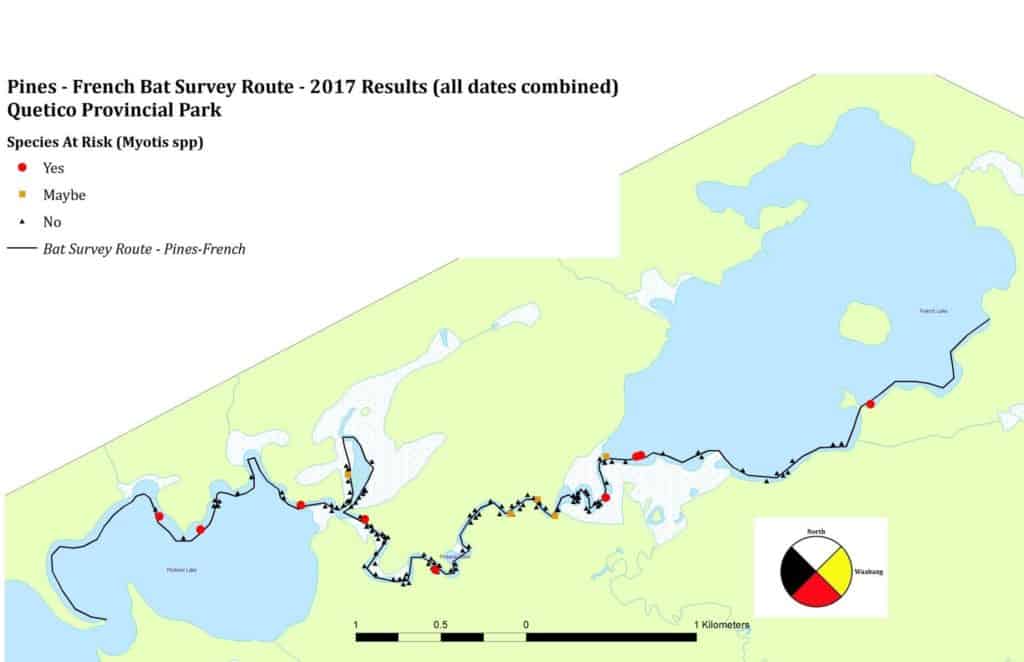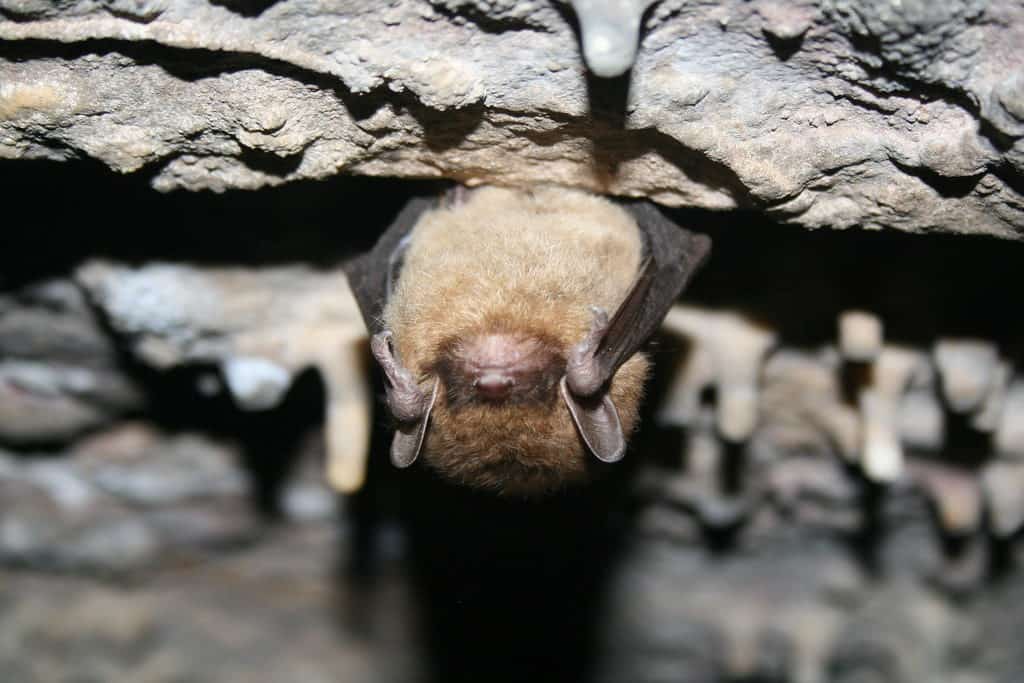
Recent field studies of bats in Quetico Provincial Park have provided valuable data that will help the Ontario Ministry of Natural Resources manage the wilderness as a devastating disease encroaches.
While bats may be rarely seen in the Quetico-Superior because of their nocturnal nature, the flying mammals are critical to the ecosystem. Voracious insect-eaters, they help control populations of forest pests.
The fungal infection called White-nose Syndrome, which affects a family of bats known to live in Quetico, has been reported in areas on almost all sides of the park. The disease has decimated populations elsewhere in North America since it was first identified in New York in 2007. Quickly spreading, the first outbreak was found in Ontario in 2010.
According to the Ontario Ministry of Natural Resources, “bats at more than three quarters of Ontario’s hibernation sites are at high risk of disappearing due to white nose syndrome. Mass die-offs mean that there are no individuals left to reproduce.”
Bats in the Myotis family were added to the province’s Endangered Species List in 2013.
The loss of bats from the region could have significant effects on the ecosystem. Because a bat can eat more than its weight in insects each evening, it plays an important role in controlling bug populations. That includes species that can wreak havoc on trees if their population grows too high.
Assessing at-risk species
Biologists in Quetico realized they couldn’t protect what they didn’t know was there, and initiated a monitoring project in 2017, with funding and staffing from the Quetico Foundation. The monitoring project used primitive technology perfectly-suited for the task — a canoe — and modern technology — a high-frequency microphone that can detect the calls of bats above the normal human range of hearing.
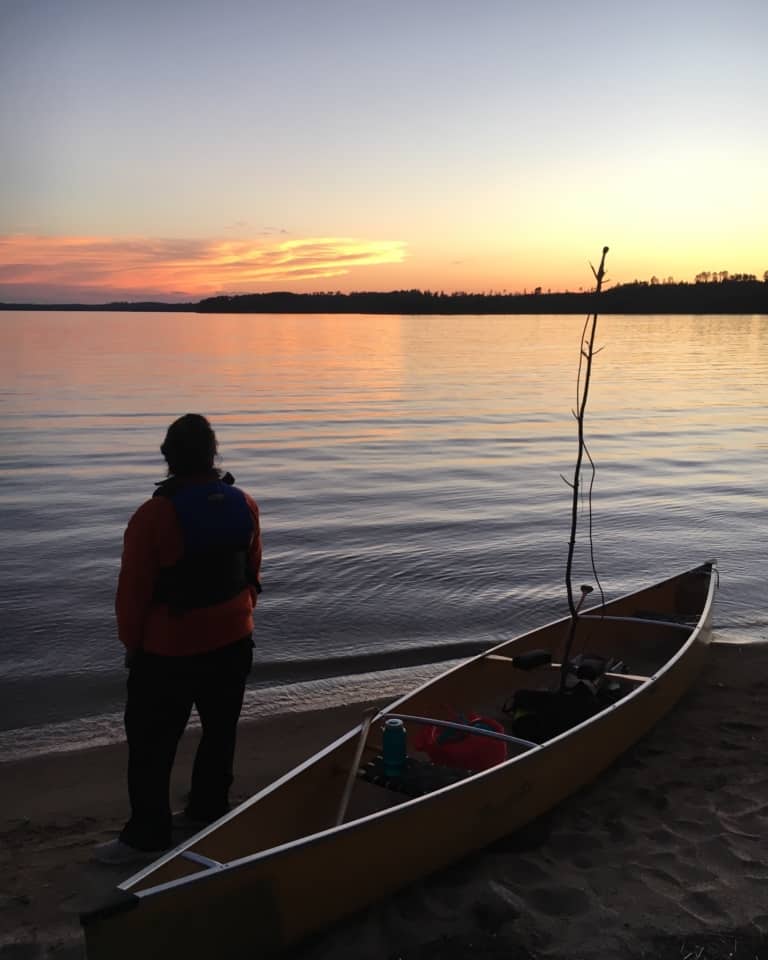
Data collection was accomplished by biology interns hired by the Quetico Foundation to work with park staff, contributing to research and getting valuable work experience. The 2017 interns involved in the project were Jared Stachiw and Kristen Elder. Park biologist Brian Jackson led the project, writing the final report with former intern Amy Adair.
By paddling along an approximately six-mile route through the northeastern corner of the park, at dusk and in the dark, three times per summer, the researchers could use the recorder to identify the different species of bats flying overhead.
Seeking scientific validity, they attempted to cover the distance in approximately the same amount of time on each trip. The only challenge to this, according to their report, was “Actual speed was approximately 5.5 kph, mostly because Jared wouldn’t slow down.”
Nonetheless, all the surveys lasted between 110 and 113 minutes.
Computer software and human analysis made it possible to identify what bats were most common in Quetico.
Results released
Last year, the group issued a report on the initial surveys. Bats susceptible to White-nosed Syndrome made up just six percent of the calls they heard. The most common species was the Hoary Bat, making up two-thirds of the calls.
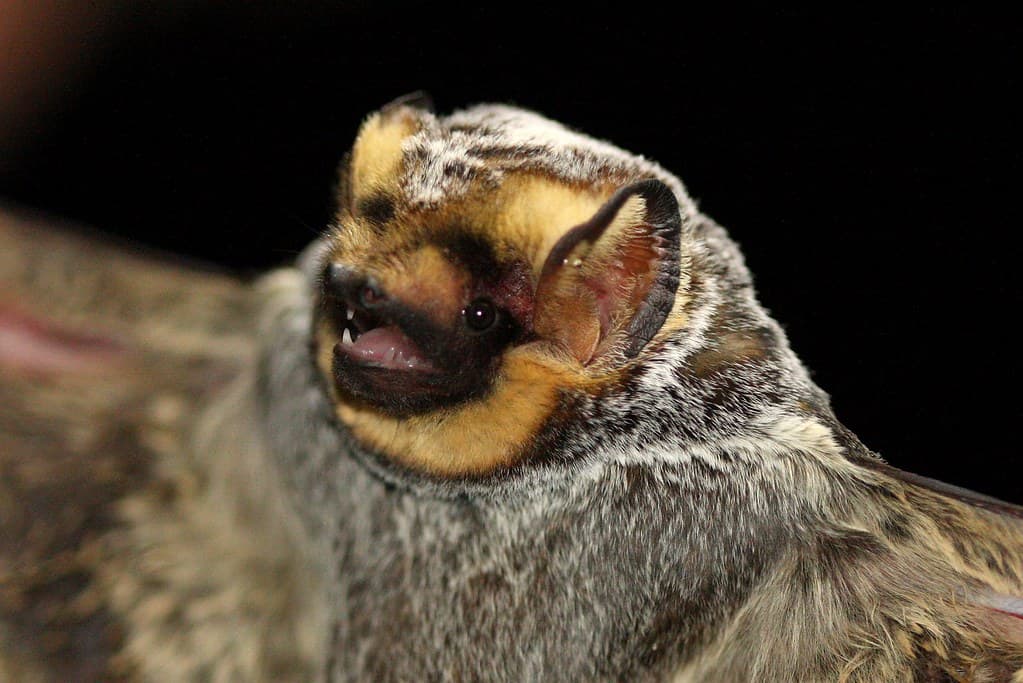
Altogether, five species of bat have been recorded in Quetico Park, including three migratory species: Eastern Red Bat (Lasiurus borealis), Hoary Bat (Lasiurus cinerius) and Silver-haired Bat (Lasionycteris noctivagans) and two non-migratory species: Big Brown Bat (Eptesicus fuscus) and LittleBrown Myotis (Myotis lucifugus). A sixth species, Northern Myotis (Myotis septentrionalis), has been observed immediately north of Quetico and may also live in Quetico.
The researchers also found that bat calls were most frequent in river section or wetlands that were close to forested shorelines.
Now that this data has been collected and analyzed, the park plans to continue occasional monitoring to help detect any future changes.


